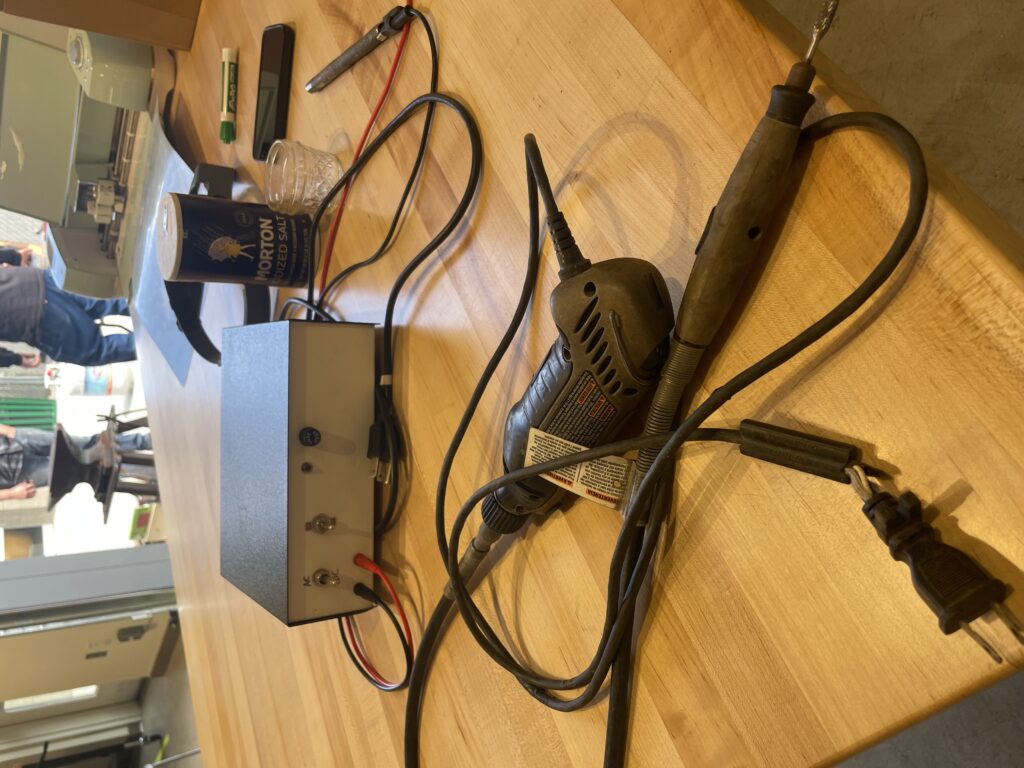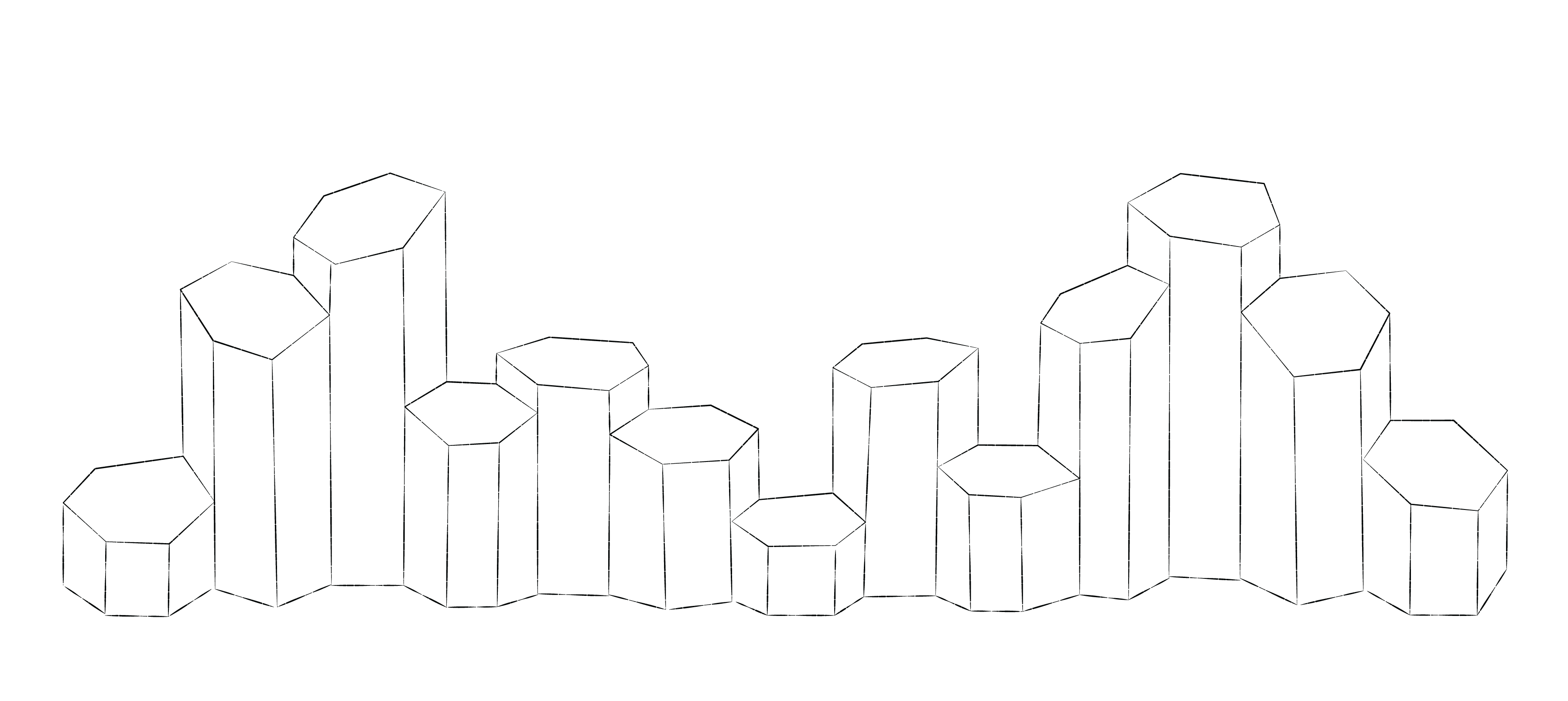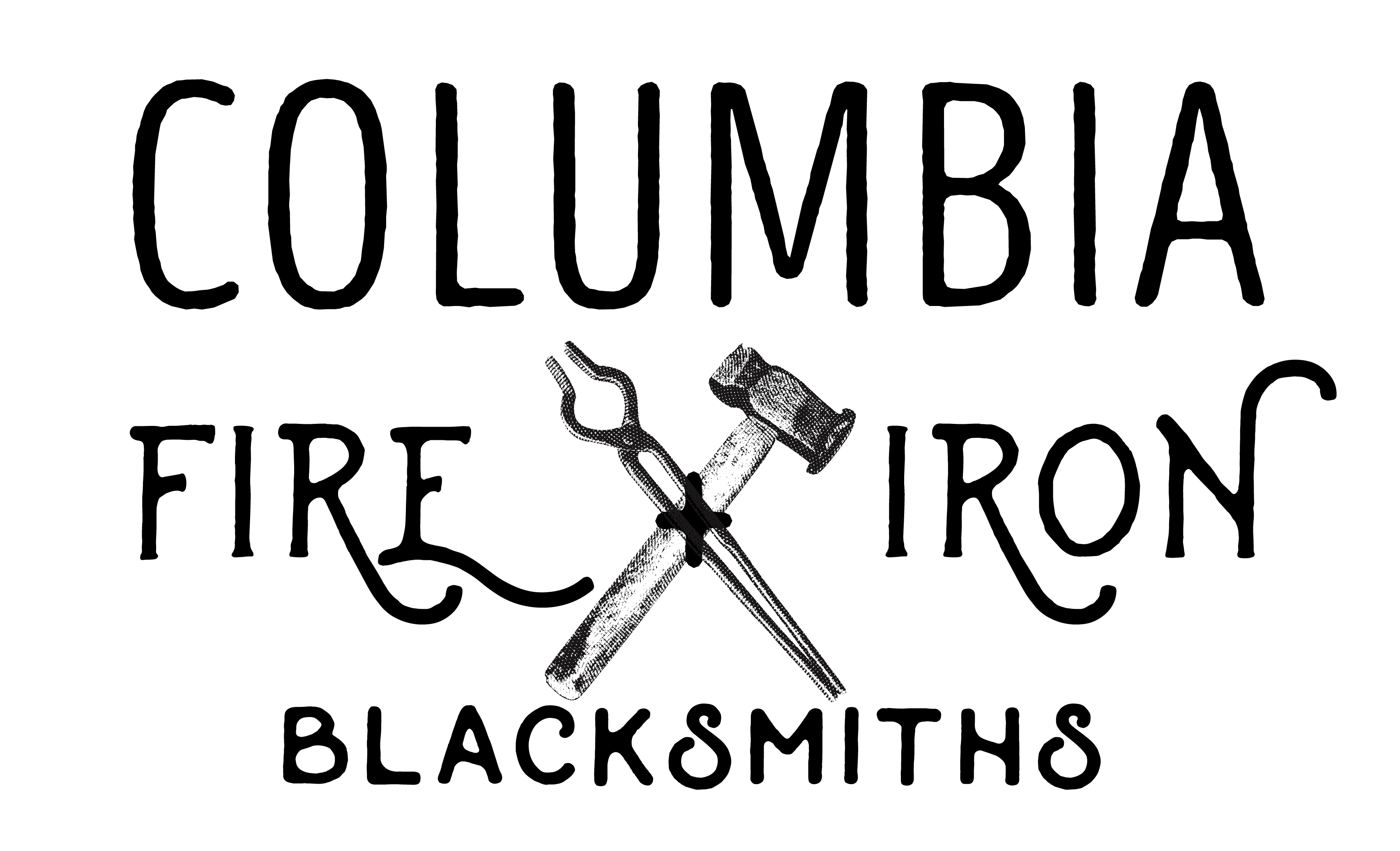We had a good crowd and great presentations from CFI members Chris Kerney and Zach Robins at CFI’s Touchmark Workshop on April 21st. Chris and Zach demonstrated two different methods for creating a touchmark, while Mallory provided graphic design support for folks if they needed. A blacksmith’s touchmark is their signature, a steel stamp to mark their work as their own. Your touchmark could be your initials creatively presented, the name of your forge, or an image that has significance to you.
File Coil Spring Touchmark: Chris showed us that when you have no limitations on tools, you can do anything—you don’t have to be stuck in an old-fashioned or traditional way of doing things. He walked us through making a flower touchmark using a truck coil spring and using differently sized and shaped files to shave it down.
- First, straighten out the truck coil spring.
- If doing a flower: start with a circle, then quarter it, and then drill a hole in the center. Start filing away material at the cut lines. Take it step by step and evaluate.
- File work is limited. With lasers and more advanced technology, the finer the possible linework.
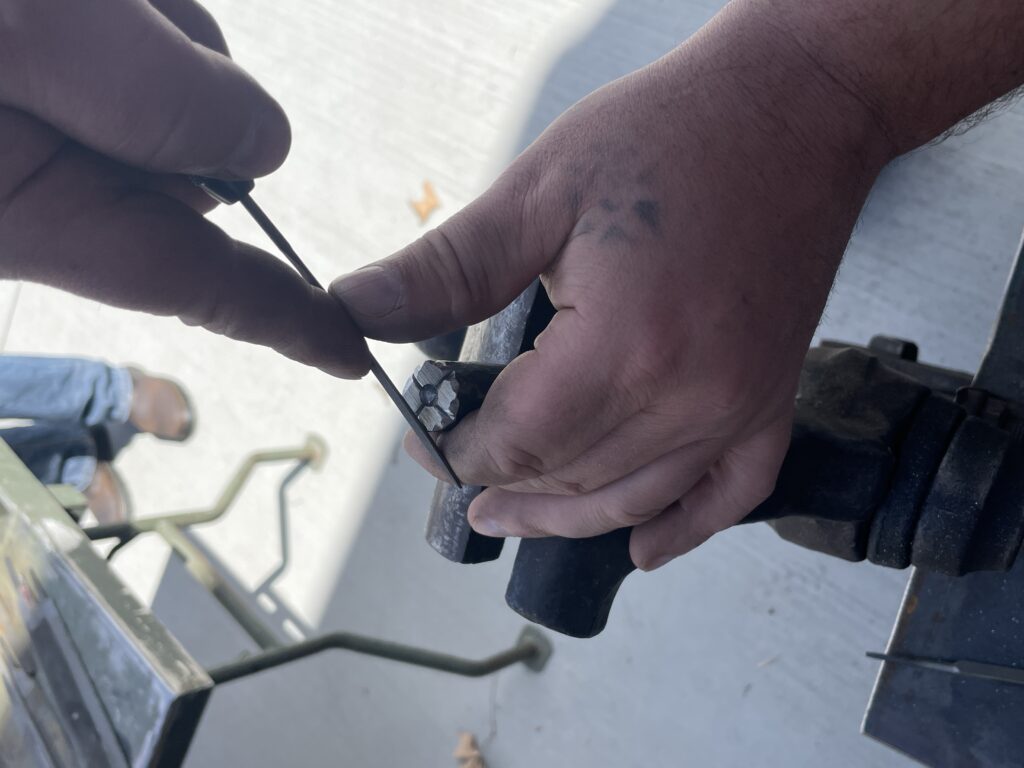
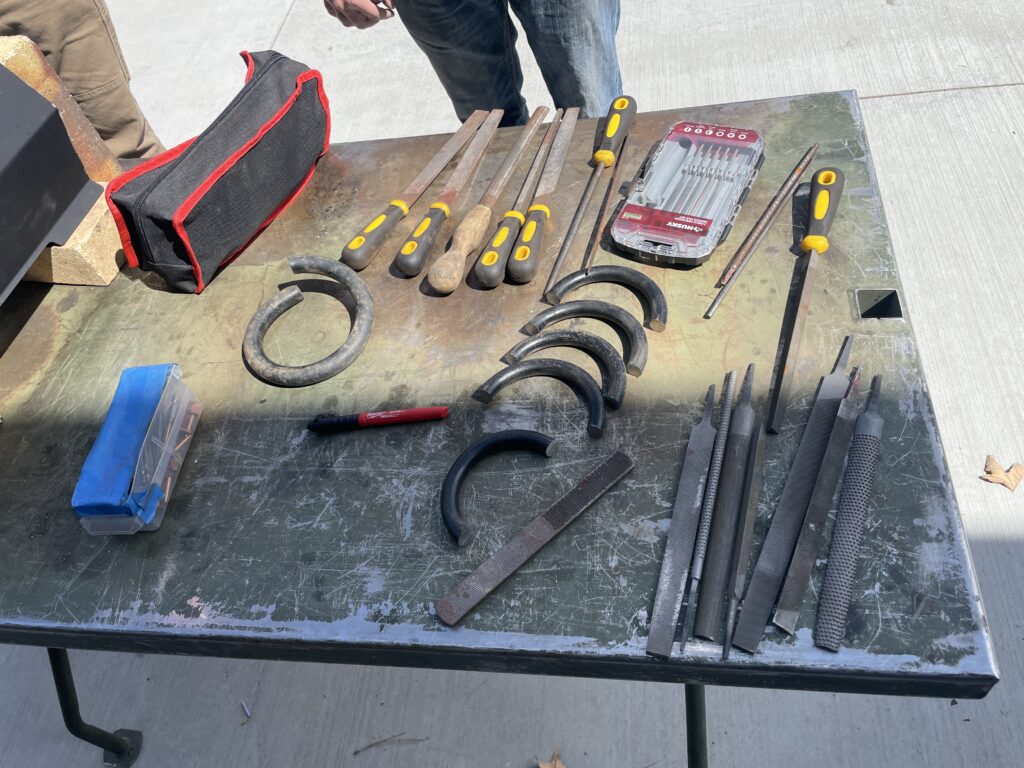
Electrochemical Etching: Zach showcased the electrochemical etcher he made, which uses a dryer transformer (you can look up Blackbeard or Redbeard on YouTube for a tutorial on how to build it) to run AC/DC currents through saltwater (table salt) to etch onto metal.
- First, the design is put through to a Cricut vinyl printer and is printed out.
- With the vinyl sticker design in place on the metal, place a small piece of sponge dampened with saltwater (that is connected to a probe) on the design.
- Turn the machine to DC current, which cuts the metal (the negative space gets removed)
- As a touchmark, the image is reversed. If you are doing this directly on the piece of metal, it will be the same image you designed (with the negative space getting removed)
- Switch to the AC current to darken/blacken the etching.
- There is also a brass brush option (after quenching)
- A Dremel tool can be used to help refine the image, if needed

